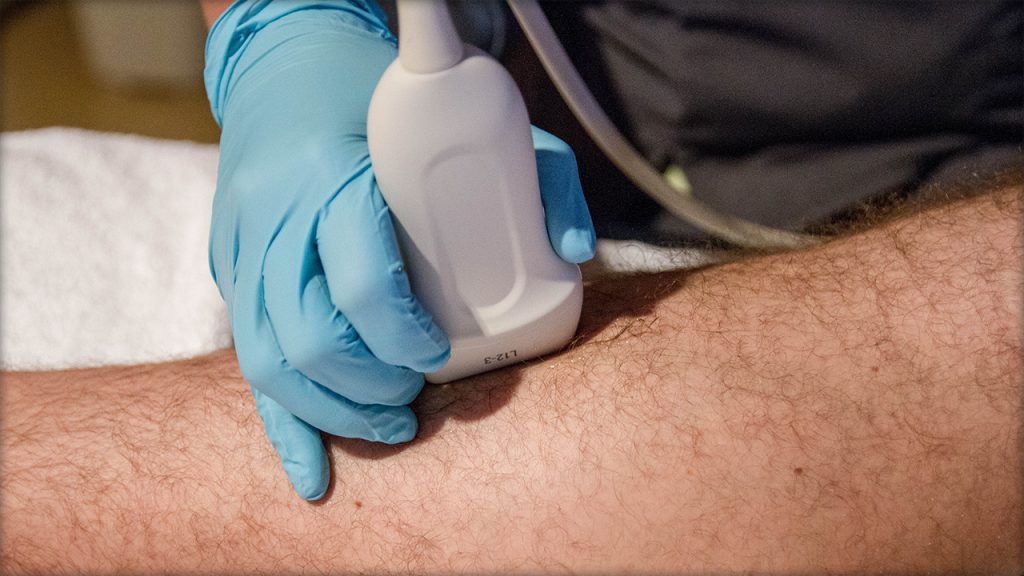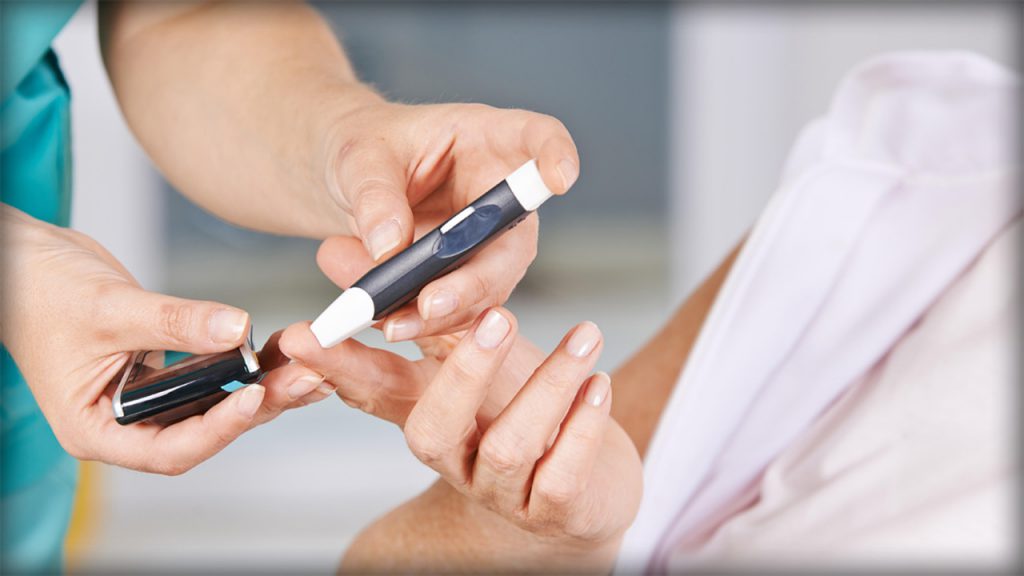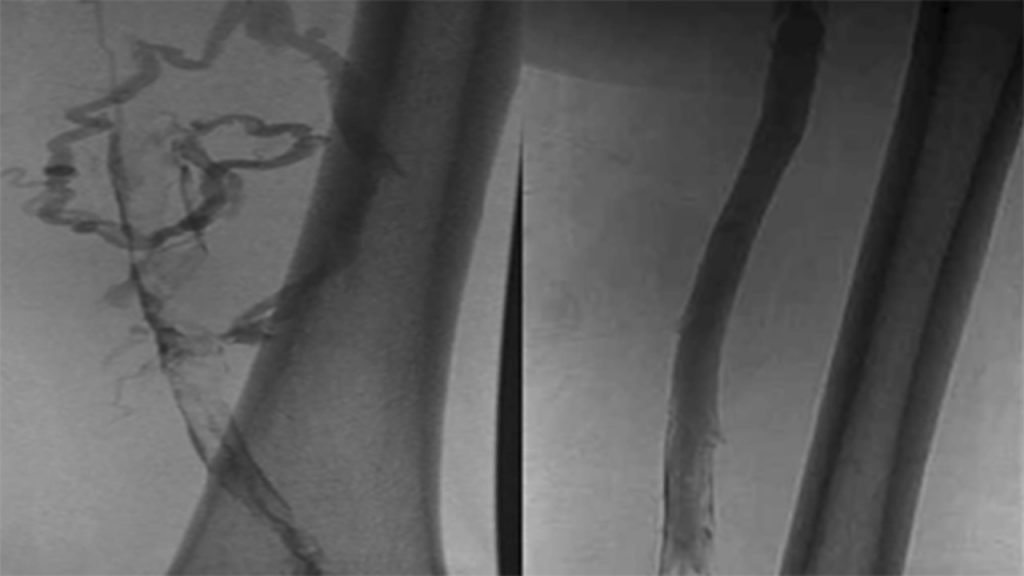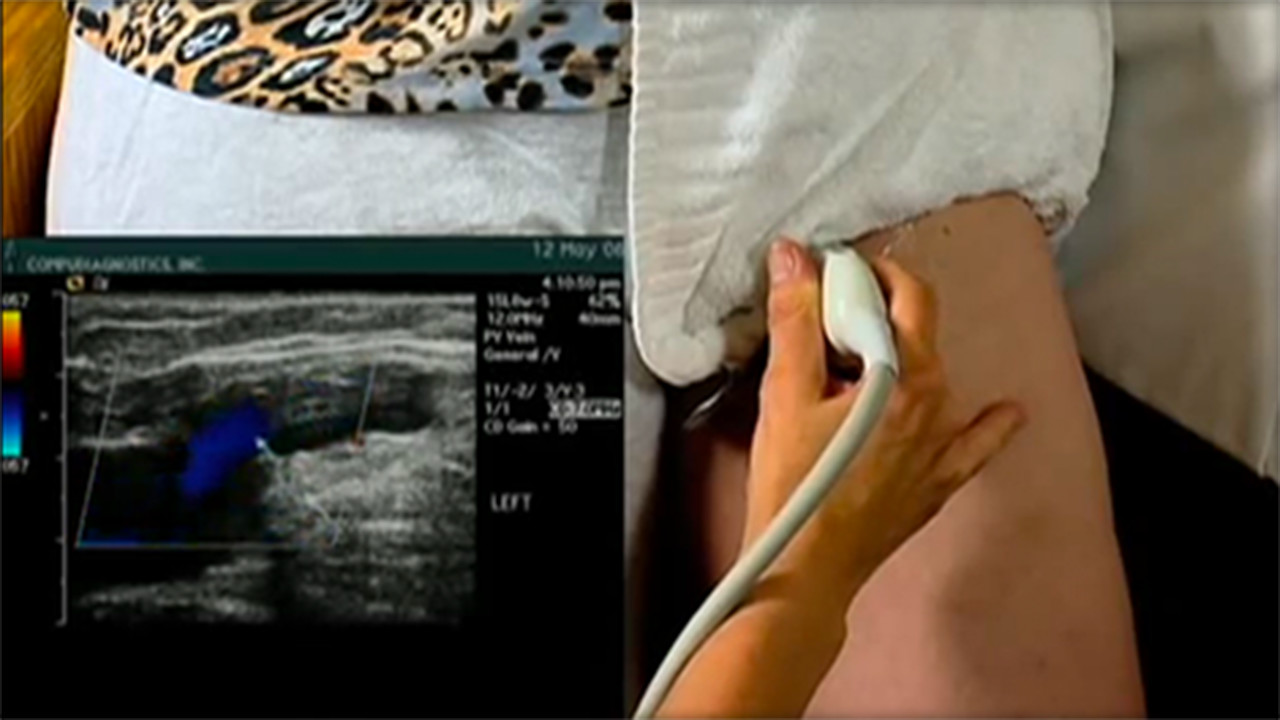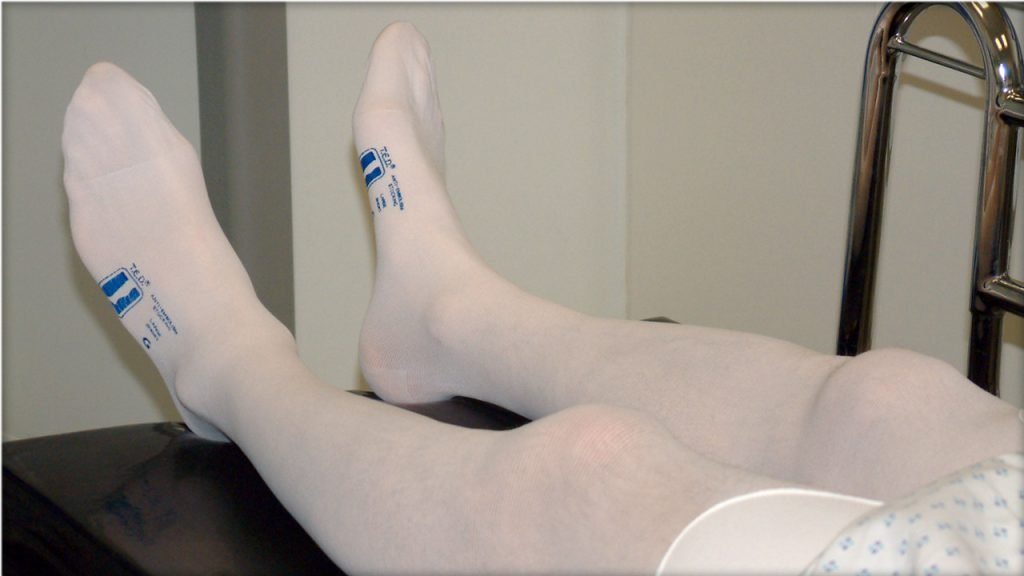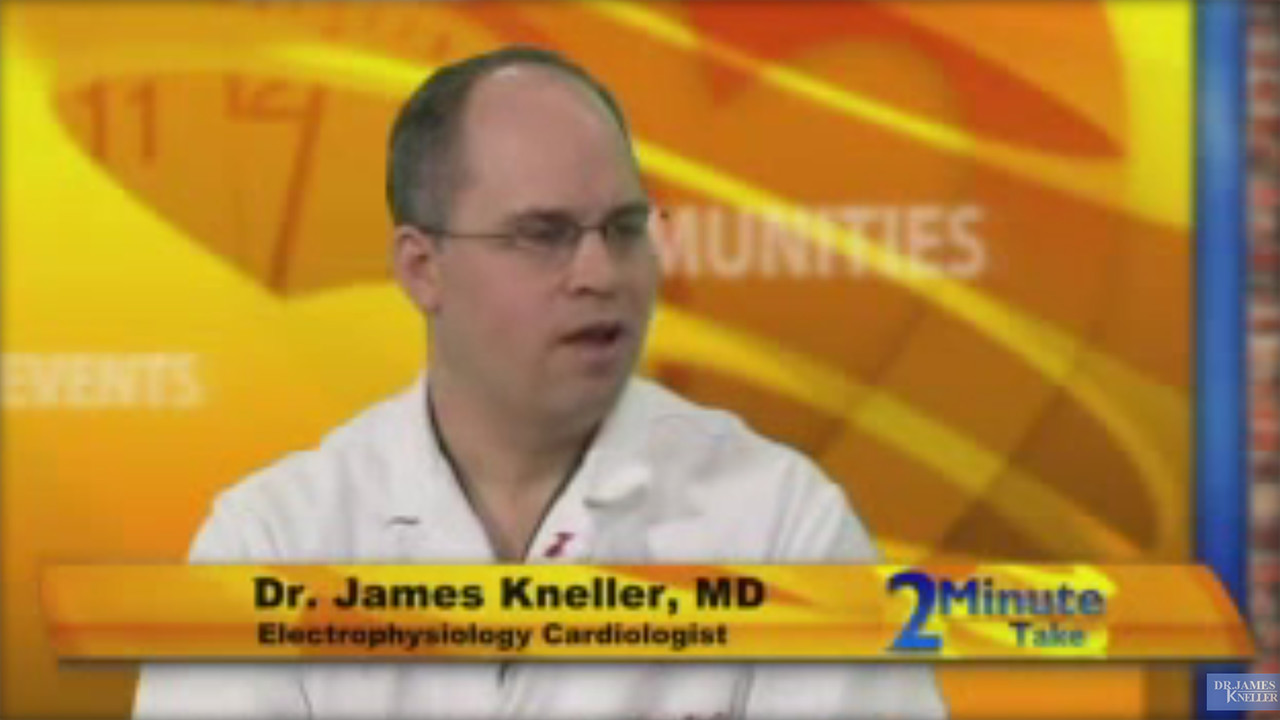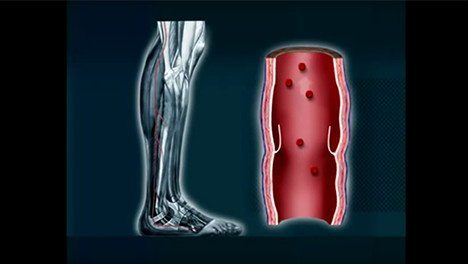Deep Vein Thrombosis (DVT)
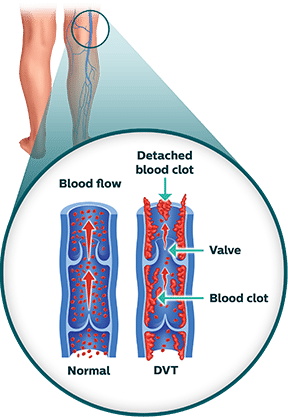
Deep vein thrombosis (DVT) is a serious, but treatable condition that occurs when a blood clot forms deep inside the veins of your body, typically in the lower leg, thigh or pelvic area. Blood clots affect almost 900,000 people each year in the United States and can lead to pulmonary embolism (PE), a potentially fatal condition in which the blood clot can break off and block blood flow to the lungs.1 Without adequate blood flow, damage to the lungs and other organs of the body can occur, requiring prompt medical attention.
Symptoms of DVT
While anyone can experience DVT, certain factors can increase the likelihood of developing it, such as long periods of inactivity, surgery or trauma.2 Although the condition can be serious, it only presents signs and symptoms 50% of the time in patients.3 When present, these DVT symptoms may include all or any combination of the following:3
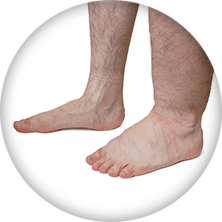
Swelling
Swelling in the leg with the affected vein. The swollen area may exhibit increased warmth.

Pain
A cramping or diffuse pain may cause tenderness in the calf muscles (small DVT) or the thigh muscle (large DVT).

No Symptoms
Up to 50% of patient who have a DVT do not experience any noticeable symptoms
Non-healing wound image courtesy of Dr. Raghu Kolluri.
DVT Diagnosis and Treatment
Diagnostic Procedures Some patients may experience DVT just once, but for others, the condition may become chronic. Since DVTs can be life threatening, getting a proper diagnosis is crucial. A doctor may use a combination of a physical exam, medical history and one of several tools to make a diagnosis.1 Photos of Diagnostic Procedures
Videos of Diagnostic Procedures
Duplex Ultrasound
A tool that uses sound waves to look at the flow of blood in the veins.
D-dimer Test
This diagnostic blood test measures a substance that can be released when a blood clot dissolves. Higher levels suggest the presence of a DVT or pulmonary embolism (PE).
DVT Treatments
Despite serious complications, DVT can be treated if detected early. Certain treatments may work for some patients, but not others. A vascular specialist may recommend treatments that prevent the blood clot from enlarging and moving to the lungs or other therapies to dissolve the clot right away. These treatments may include:3 Photos of DVT Treatments
Videos of Diagnostic Treatments
Blood Thinners
These medications are used to reduce the chances of a blood clot.
Compression Stockings
These are recommended not only to prevent DVTs, but to relieve pain and swelling following a DVT incident.
DVT Patient Stories
Deep vein thrombosis (DVT) can affect anyone and may lead to serious complications such as pulmonary embolism. Read what patients have to say about their journey through seeking help, getting a diagnosis, receiving treatment and restoring their quality life.
More Patient Stories
PAD Stories

Many PAD patients experience a gradual decline in activity level and quality of life which can go unnoticed for years. Learn about Joe’s suspicions and his perseverance to seek help.
CLI Stories

Early intervention can be key for critical limb ischemia (CLI). Learn about Mark’s struggles and triumph to overcome CLI.
DVD Stories

Patients with deep venous disease (DVD) often go through years of suffering with worsening symptoms and other underlying conditions. Learn about Melanie’s path to uncovering an underlying condition and her road to restoring her health.
Helpful Resources

PVD Doctor
Discussion Guide
Get helpful tips and advice on how to talk to your doctor about a PVD screening.

PAD Brochure
Find out more information on PAD by downloading this helpful brochure.
Third-Party Resources
Helpful Websites
Blogs
Find a Doctor that Treats DVT
Consult your doctor to learn more about DVT risks and how to maintain your vascular health. You can also use our tool below to find a specialist near you.
This tool is not inclusive of all specialists. Consult with your insurance provider to find specialists that are covered within your network.
Are You a Healthcare Professional?
Find out how to register your practice with us.
1. “Venous Thromboembolism (Blood Clots).” Centers for Disease Control and Prevention. August 13, 2015 2. “Risk Factors for Venous Thromboembolism (VTE).” American Heart Association. Mar 9, 2017 3. “What Are the Signs and Symptoms of Deep Vein Thrombosis?” National Heart, Lung and Blood Institute. U.S. Department of Health & Human Services. October 28, 2011
Disclaimer
The opinions and clinical experiences presented herein are for informational purposes only. Individual results may vary depending on a variety of patient-specific attributes and related factors. Dr. Raghu Kolluri has been compensated by Philips for his services in preparing and providing this material for Philips further use and distribution. We offer links to third-party websites that may be of interest to our website visitors and in no way, represent any affiliation or endorsement of the information provided on those linked websites. These links are provided solely for your convenience and to assist you in learning more information on this topic. However, Philips does not control, endorse or guarantee the accuracy of the information contained on the linked sites. In addition, Philips makes no representations or warranties of any kind with regards to any third-party websites or information contained therein. If you have any questions or concerns about the information on the linked third-party websites, please contact the third-party websites directly.
